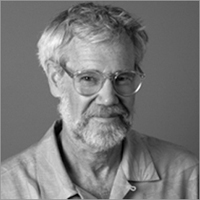
Since an exhibition at the Galerie Der Spiegel, Koeln, Germany (1990), Douglas Cooper has focused on large panoramic murals of cities in the USA and abroad. In three of these projects he has worked together with elderly residents of each city and incorporated their stories and drawings (often in their own hands) into the works. These murals present a highly personal record of the life of each city.
Between 1991 and 1993 he completed a 120 foot-long cooperative mural with Vintage, a senior center in Pittsburgh. This mural was exhibited as a work in progress at The Carnegie Museum, Pittsburgh, in 1992 and again in 1993. This work is now permanently installed at the Senator John Heinz Regional History Center in Pittsburgh and is the subject of a one half-hour television documentary, A Map of Memories, produced by WQED TV, Pittsburgh. From 1994-5, together with The Center in the Park, a Philadelphia senior center, he completed a 96 foot-long mural for the main lobby of Philadelphia's new downtown Justice Center.
Summer 1996, he produced a 5 meter-high by 9 meter-wide mural for the city of Frankfurt/ Main, Germany. This project involved four undergraduate students and Professor of German, Stephen Brockmann, from Carnegie Mellon University, and elderly from various senior centers in Frankfurt. In that the project was conducted entirely in German language, it was also used as a vehicle for the language instruction of the Carnegie Mellon students. It is now permanently installed in Frankfurt's central food market, die Kleinmarkthalle.
The combination of story, history and image is found also in Cooper's more geographic murals. The two sets of murals he has produced for John's Pizzarias in New York, John's 65th St.(1993), and John's 44th St.(1997), have combined vast panoramic overviews for patrons in mezzanines with historical vignettes at eye-level for patrons seated in booths. The 200 foot-long mural completed in 1996 for the University Center at Carnegie Mellon University shows the City of Pittsburgh and the Carnegie Mellon Campus in three different time frames and from three different directions of view.